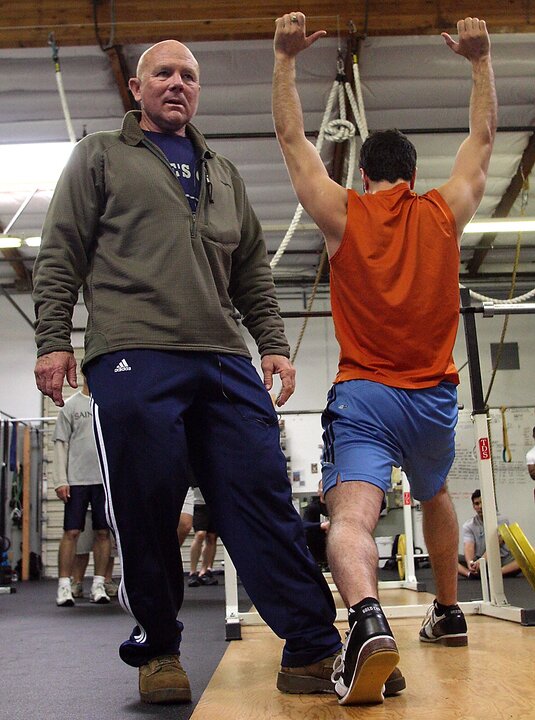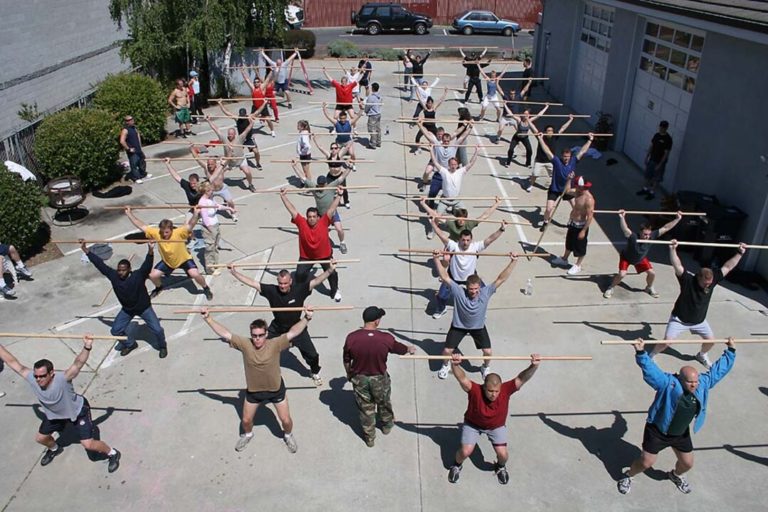In 2004, Mike Burgener got a call from Greg Glassman.
Burgener, now a Level 5 Senior International Weightlifting Coach for USA Weightlifting and creator of the CrossFit Weightlifting course, was working at the time as a strength coach at Rancho Buena Vista High School in Vista, California. Glassman had contacted USA Weightlifting looking for an expert coach to train a group of his athletes. They sent him to one of their best: Burgener. So Glassman and his group of athletes — which included Annie Sakamoto, Greg Amundson, and Eva Twardorkins — traveled to Southern California to refine their Olympic weightlifting skills and learn how to better teach this complex skill.
Burgener put on a two-day seminar for Glassman and his group, and two weeks later, Burgener got another call from the CrossFit founder.
“He called me up and he said, ‘Hey, this guy from Golden, Colorado, wants me to come over and do a seminar for him at the police academy. I can’t pay you for your time, but I’ll cover your travel costs if you’d come and give a three-hour presentation,’” Burgener said.
Burgener agreed because it would give him a chance to visit his son at the nearby Olympic training center. He had no idea the weekend would change his life.
Over the course of the weekend, Burgener said Glassman realized he had the knowledge and talent to run this type of seminar on his own.
After they’d returned home, Burgener got a third call from Glassman.
“He says, ‘We’re going to do seminars once a month. We’re going to call them CrossFit Level 1 seminars and we want you to be part of it. So will you be part of it?’” Burgener remembers Glassman asking.

Coach B working with an athlete on foot position in the jerk.
Burgener said yes and began driving his Harley Davidson from San Diego to Santa Cruz every month for a sold-out CrossFit Level 1 Seminar, which at that time was three days long. Along with Burgener teaching weightlifting, Glassman brought in other experts to teach their specialties, including kettlebells and gymnastics.
After a year of these monthly three-day seminars, Glassman told all the experts he was going to reduce the Level 1 Course to two days and offer the specialty courses as separate seminars.
“The first year, I think it was 2006, I did five courses on my own. In 2007, I did 10 courses on my own … by 2009 I did 40 courses by myself. I did them all over the world, but I did them (by) myself,” Burgener said.
It was at that point Burgener realized he couldn’t run the courses by himself, so he turned to his trusted coaches, including Josh Everett and Stephane Rochet, to help him keep the courses going.
“You find out you’ve got great people that are surrounding you. It was a blessing,” Burgener said.
How the Specialty Courses Make Better Coaches
Rochet, now a Senior Content Developer at CrossFit, remembers one of those early courses without Burgener.
“Josh Everett and myself and a guy named Shane Hamman — who’s not really in the CrossFit community, but he’s one of America’s all-time greatest weightlifters — we went out to CrossFit Colosseum in Toronto,” Rochet said.
Rochet remembers Burgener checking in with him frequently.
“I probably had 1,000 texts from him,” Rochet said, laughing.
The course started off well. The affiliate was divided into different rooms, and Rochet and Everett were in one room with their group, using a PVC pipe to warm up and review stance and positioning.
“We’re doing the Burgener warm-up and we hear this loud crash — like heavy weights dropped — and then we hear heavy weights drop again, and there’s a loud crash and it keeps going on,” Rochet said.
Rochet and Everett wrapped up their warm-up and headed into the other room to see what Hamman was doing.
“We see he’s got people with 220-lb on the bar, you know, going one at a time. They’re maxing out,” Rochet said.
